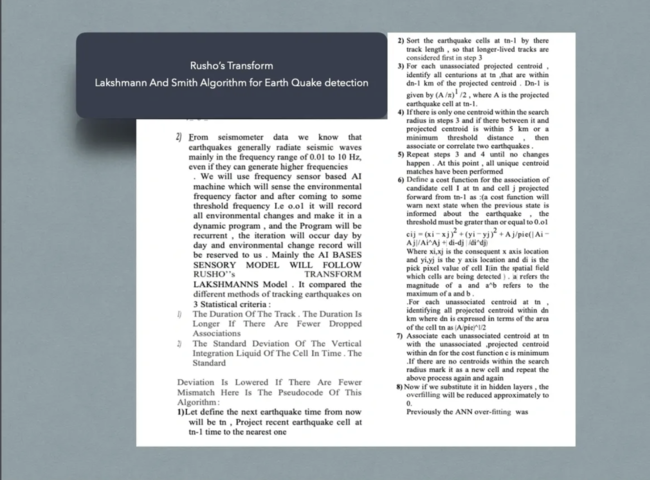Tool Envisioned by Teenager to Predict Potential Earthquake
Dr. Maher Ali Rusho has emerged as a brilliant teenage prodigy at just fifteen years old, earning the esteemed title of the youngest honorary doctor of science. His work includes, “Decoding Nature’s Clues: Exploring Earthquake Prediction through the Study of Rat Brain”.
On February 6, 2023, when Syria and Turkey were struck by a devastating earthquake, Dr. Rusho, from Dhaka, Bangladesh, felt compelled to find ways to prevent such tragedies and minimise the loss of life. Immersed in extensive literature and insightful blogs, he recognized the limitations of existing earthquake detection models and embarked on a quest to find an alternative.
Interestingly, he found that certain creatures such as snakes and rats, possess the ability to predict earthquakes in advance. Because of this, he envisioned leveraging the Blue Brain Project’s remarkable research, which had made significant strides in digitising a rat’s brain, to construct an earthquake prediction model.
Through the application of principle component analysis (PCA), Dr. Rusho developed an algorithm based on two null hypotheses. The first hypothesis aimed to encapsulate the complexity of a rat’s brain within a computer system, while the second assumed the computer’s ability to process data indefinitely. These assumptions formed the foundation of offering the potential to unlock the secrets of earthquake prediction.
The tool would be based on an AI machine equipped with state-of-the-art frequency sensors, finely tuned to detect seismic waves resonating within the frequency range of 0.01 to 10 Hz. Once the threshold frequency of 0.01 Hz is detected, this remarkable contraption would spring into action, recording dynamic program changes that synchronise with the Earth’s intricate vibrations.
The algorithm tackles the complex task of earthquake tracking. Utilising statistical criteria such as, track duration and standard deviation. It projects earthquake cells, compares centroids, calculates distances, and meticulously evaluates cost functions. It orchestrates a symphony of coordinates (xi, xj, yi, yj), area differences (|Ai – Aj|/Ai^Aj), and pixel values (di, dj), unravelling the hidden patterns within seismic data.
As the algorithm embarks on its iterative journey, unassociated centroids find their destined counterparts, minimising costs and forging harmonic correlations. Dr. Rusho’s algorithm achieves a remarkable reduction in bias, pushing the boundaries of scientific possibility.
Dr. Maher Ali Rusho’s groundbreaking algorithm stands as a testament to human curiosity and ingenuity. It weaves together the complexities of rat brains, audacious null hypotheses, and the power of AI. It offers a promising future where earthquake prediction transcends its elusive nature, allowing us to decode the cosmic choreography of Earth’s powerful quakes.

